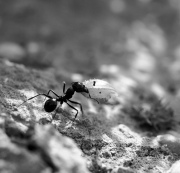Like many other fields, science has its own style of communication full of specific jargon and guided by unwritten rules. Most of the posts on this blog focus on breaching this barrier to the public’s understanding and appreciation of science. In this series, I’d like to take another approach by highlighting scientific words which have escaped the confines of jargon to reach a broader appeal because of their sound or their evocative power as metaphors. Today’s uncommon but useful word is nychthemeron. [Previous words: petrichor, alluvium]
Continue reading
Words of science: nychthemeron
30 Sunday Sep 2012
Posted in Language, Words of Science





You must be logged in to post a comment.